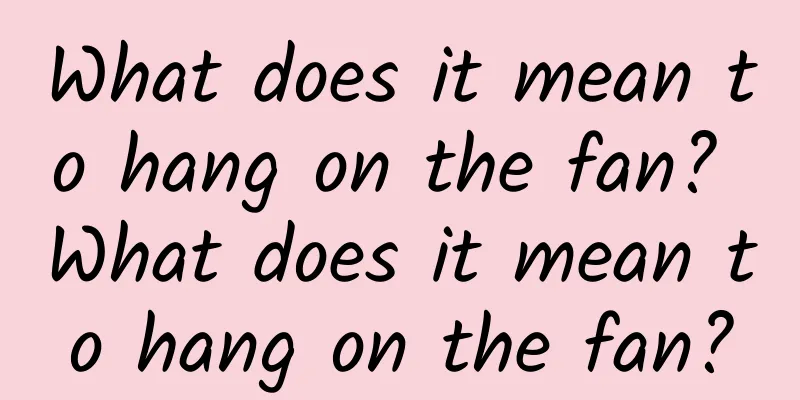What nutrients do whole grain foods contain? What are whole grain foods?

|
In our daily life, we often see cereals, whole wheat, bran, etc. Whole wheat is a very popular whole grain food. Whole wheat includes fiber shell, bran and endosperm. It should be noted that it is different from wheat. Wheat does not have husk and bran. The former is a whole grain food. If you want to know more about this common sense, please open the article below for details! Contents of this article 1. What nutrients do whole grain foods contain? 2. What are whole grain foods? 3. Things to note when eating whole grain foods 1What nutrients do whole grain foods contain?carbohydrate The most basic nutrient in whole grain foods is carbohydrates. Basically, whole grain foods contain carbohydrates, and the content is not low. Carbohydrates are the most ideal source of calories for the human body, so most whole grain foods can be eaten as staple food. proteinThe protein content in whole grain foods is generally between 7.5% and 15%. Protein is an essential nutrient for the human body. Although there is not a lot of protein in whole grain foods, it is still relatively healthy and nutritious for the human body. VitaminsWhole grain foods contain a lot of B vitamins, the main sources are pantothenic acid, niacin, riboflavin, etc., and the content is not low. They can supplement B vitamins very well. At the same time, there are other vitamins that can supplement the needs of the human body. 2What are whole grain foods?Whole grain foods refer to whole, crushed, broken or flaked grains. It is a general term and there are many foods, so only some of them can be introduced below: Whole oatsWhole oats are a type of whole grain food. They are rich in vitamins, minerals and fiber, and are naturally gluten-free, making them very healthy foods. Oats are rich in antioxidants, especially avenanthramides, which can lower blood pressure, but it is best to choose whole oats. Other processed oats may contain added sugar. whole wheatWhole wheat is a very popular whole grain food. Whole wheat includes the fiber shell, bran and endosperm. It should be noted that it is different from wheat. Wheat does not have husks and bran. The former is a whole grain food. However, whole wheat contains gluten, which is a protein that can trigger harmful immune responses in some people. Therefore, it is not suitable for people who are intolerant to gluten. BuckwheatBuckwheat is a whole grain seed food that is rich in nutrients, such as manganese, magnesium, copper, phosphorus, iron, B vitamins and fiber. It is also a gluten-free food. Buckwheat husk is a dietary fiber that can create a healthy environment for our intestines and is a healthy food for the human body. 3Things to note when eating whole grains1. Do not eat too much: Do not eat too much whole grain food, as it can easily cause indigestion. 2. It needs to be cooked thoroughly: If whole grain foods are not cooked thoroughly, it will cause greater pressure on the stomach and intestines, thus causing digestive problems. 3. Choose those without added sugar: There are still whole grain foods with added sugar on the market. This tastes better, but it is not good from a health perspective. |
<<: Why do we need to supplement protein? Is the white color in bone soup fat or protein?
>>: What is whey protein? How to drink whey protein
Recommend
Four ways to become a special woman
1. Avoid becoming a victim of fashion There will ...
What is the reason for the yellow-green leucorrhea with odor?
Yellow-green leucorrhea with an odor is a sign of...
What foods can stop bleeding and speed up menstruation?
When women have their menstrual period, some wome...
What are the benefits of eating bacon? Should bacon be refrigerated or frozen?
Bacon itself is a meat product, containing a lot ...
Can premature ovarian failure be cured and lead to pregnancy?
Normally, women's ovarian decline should occu...
Is it good for a woman to have thick palms?
Women are the main force in life and the main par...
Why do girls' breasts grow bigger?
When girls begin to enter puberty at the age of 1...
Treatment for itchy breasts in girls
Nowadays, there are more and more strange disease...
What is the shape of the female vulva?
The female vulva is part of the female reproducti...
Will having sex 25 days after abortion affect your health?
Many women need to undergo abortion due to unexpe...
What are the symptoms of premature birth in pregnant women
"Ten months of pregnancy, one day of deliver...
Don't panic if you have chronic prostatitis
Author: Chen Gang, Chief Physician, First Affilia...
What are the uses of tangerine peel? Does tangerine peel have any side effects?
Tangerine peel can nourish the stomach and regula...
When is the best time to take folic acid during pregnancy?
Women need to take some folic acid orally when th...
Blood clots during menstrual cycle
Although menstruation helps women's liver det...









